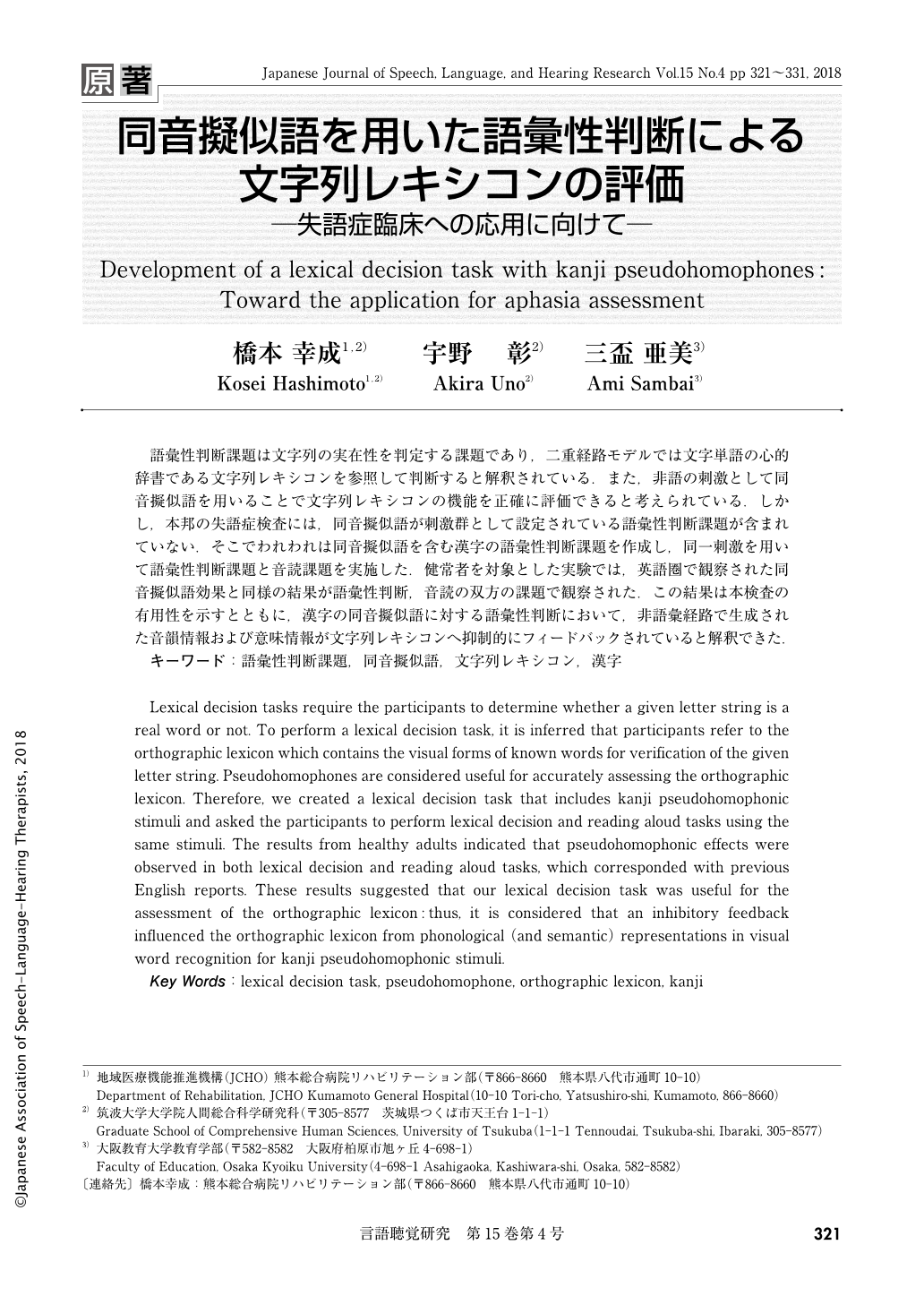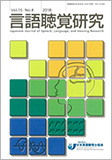Japanese
English
- 有料閲覧
- Abstract 文献概要
- 1ページ目 Look Inside
- 参考文献 Reference
語彙性判断課題は文字列の実在性を判定する課題であり,二重経路モデルでは文字単語の心的辞書である文字列レキシコンを参照して判断すると解釈されている.また,非語の刺激として同音擬似語を用いることで文字列レキシコンの機能を正確に評価できると考えられている.しかし,本邦の失語症検査には,同音擬似語が刺激群として設定されている語彙性判断課題が含まれていない.そこでわれわれは同音擬似語を含む漢字の語彙性判断課題を作成し,同一刺激を用いて語彙性判断課題と音読課題を実施した.健常者を対象とした実験では,英語圏で観察された同音擬似語効果と同様の結果が語彙性判断,音読の双方の課題で観察された.この結果は本検査の有用性を示すとともに,漢字の同音擬似語に対する語彙性判断において,非語彙経路で生成された音韻情報および意味情報が文字列レキシコンへ抑制的にフィードバックされていると解釈できた.
Lexical decision tasks require the participants to determine whether a given letter string is a real word or not. To perform a lexical decision task, it is inferred that participants refer to the orthographic lexicon which contains the visual forms of known words for verification of the given letter string. Pseudohomophones are considered useful for accurately assessing the orthographic lexicon. Therefore, we created a lexical decision task that includes kanji pseudohomophonic stimuli and asked the participants to perform lexical decision and reading aloud tasks using the same stimuli. The results from healthy adults indicated that pseudohomophonic effects were observed in both lexical decision and reading aloud tasks, which corresponded with previous English reports. These results suggested that our lexical decision task was useful for the assessment of the orthographic lexicon: thus, it is considered that an inhibitory feedback influenced the orthographic lexicon from phonological (and semantic) representations in visual word recognition for kanji pseudohomophonic stimuli.

Copyright © 2018, Japanese Association of Speech-Language-Hearing Therapists. All rights reserved.


